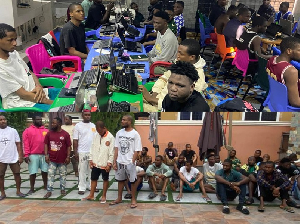Opinions of Wednesday, 13 February 2008
Columnist: Oppong, Seth
Making the HR practices produce innovative workforce – Part II
This article is the part II of a previous article titled “Making the HR practices produce innovative workforce – Part I”. A business case was made for the importance of organizations becoming innovative and some HR practices that have the potential of creating innovative workforce such as appropriate selection criterion, training, and cross-functional teambuilding were discussed. It was said that employers interested in innovations should hire people with greater potential of being innovative, provide them with training to acquire necessary business skills. In this article we continue with the discussion of the appropriate HR practices capable of creating very innovative employees.
It is true that errors have cost to them. But to be innovative means to explore ideas and do some trial-and-error kind of thing. This means that company policies and rules should permit “thinking outside the box”. I believe that no employee will want to think outside the box when she knows that can cost her her job. The solution for management may be to hire people whose primary role will be to innovate, just like the R & D departments of the manufacturing companies. This idea leads to job redesign. Traditional R & D appears in many service industries under different names, business development or labels like that. My best shot at this will be to give enough autonomy to the employees who as a requirement must innovate. Perhaps, companies may need intrapreneurs (internal entrepreneurs) in almost all work units to facilitate innovation within the organization. It will not surprise me that soon such job titles like HR Intrapreneur, Sales Intrapreneur and others like that will be on work role profiles or job descriptions.
Having such intrapreneurs or employees who has as part of the job to innovate in the workplace may also require that innovation is made one of the performance criteria. If an employee is required to innovate then it only makes sense also to monitor his or her performance in relation to innovation. For instance, the number of ideas he or she generates that gets implemented, proportion of sales to total sales that is produced by the ideas, and other similar criteria can be useful in communicating to both management and the employee whether or not the employee is doing what is required of him or her. This also means that the company also put in place a mechanism to measure its innovativeness at organizational level. There are many indicators of innovation available that any management can use. It is up to them to find the experts like Industrial and Organizational Psychologists* to help them to set up their measurement and monitoring systems.
It may be brilliant to have intrapreneurs, train them, make innovation part of their performance assessment, make the company rules encourage generation of saleable ideas, without a supportive leadership it is a waste; all the ideas will just die before anything is made out of them. In other words, such employees require a different kind of supervision. They need supervisors who will empower them and champion their ideas to management for funding. Setting aside fund for just this may be it. But the idea or product champions or the supervisors of the intrapreneur must justify to management why funding must be made available to his or her subordinate.
What happens to the rest of the workforce? Aren’t they or can’t they be innovative? Management should set up a desk where ideas generated by the employees will be sent. It is up to management to figure out how to do this but the surest way will be to communicate to the employees the appropriate intrapreneurs or idea champions with whom they can share their ideas. This means knowledge management is just as crucial as talent management. Employees will be willing to come forth with ideas if they are recognized for their ideas. Recognition is therefore very important in innovation; letting people know that I told management what to do to save some money will be really important to me. In short, the organization must create a culture that recognizes and encourages innovation. The other aspect of it is having a reward system in place that shares the savings (gain-sharing) or profits (profit-sharing) made as a result of implementing the ideas. Most management will be reluctant to do this. However, giving a small token and even a certificate of recognition for the idea has the potential of making the employee in question and others to look for new great ways of doing the old business.
What I want to say is that it will be an illusion for management to think that innovation comes at no cost. It does but pays off in the medium- and long-term and sometimes even in the short-term. I hope I was able to demonstrate to management and the reading public why innovation is important and what they can do to create a more creative workforce.















